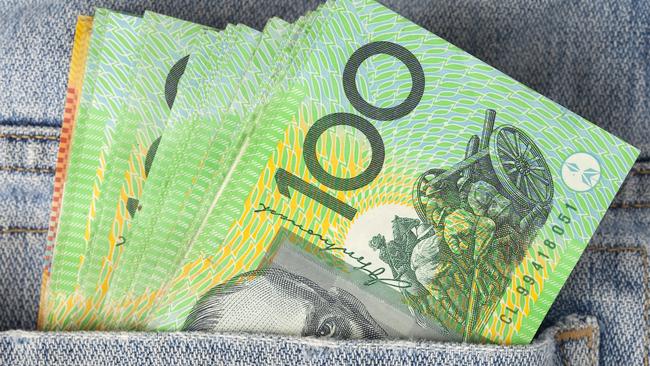Wages growth better than expected but still sluggish
Public service pay helped fuel better than expected wages growth, but likely not enough to avert more rate cuts.

Australian wages growth was better than expected in the second quarter as a result of a strong lift in pay for public servants.
However, the annual pace of wages growth remains weak and economists expect the RBA will cut rates further in the months ahead as it attempts to boost GDP growth and mop up spare capacity in the job market.
Wages rose a seasonally adjusted 0.6 per cent compared to the first quarter and rose by 2.3 per cent from a year earlier, the Australian Bureau of Statistics said.
Drivers included health care and social services.
Private sector wages rose by 0.5 per cent in the quarter, and rose by 2.3 per cent from a year earlier, while public sector wages rose by 0.8 per cent in the quarter and increased by 2.6 per cent from a year earlier.
Wages growth over the past year was strongest in Victoria, which logged a 2.9 per cent increase. Western Australia was the outlier with growth of just 1.6 per cent.
Weak wages growth is a major concern for policy makers, with the RBA reducing interest rates in June and July citing a sharp slowdown in consumer demand as the trigger for the cuts.
Economists are betting the RBA will cut further in the months ahead as it attempts to boost GDP growth and mop up spare capacity in the job market.
“The data largely confirms the RBA’s view that spare capacity is limiting upward pressure on wages and the economy needs togenerate more jobs to absorb the extra workers,” BIS Oxford Economics’ Sarah Hunter said.
Dr Hunter said the figures further cemented expectations the cash rate would be cut to a record low 0.75 per cent by the end of the year, and possibly cut again in early 2020.
RBA Governor Philip Lowe has identified weak wages and sagging productivity growth as major challenges for the economy, calling on the governments to lift spending and enact economic reforms.
With the RBA’s official cash rate at a record-low 1 per cent, the debate in markets has turned to the possibility that the central bank will soon introduce alternative policy measures to lift the economy.
The slight improvement in wages growth will come as some relief to retailers who have been battling a slowdown in spending.
Retail spending growth is now the slowest it has been in on-year terms since 1991, reflecting squeezed household budgets, according to research by ANZ.
Pressure on retailers from slowing spending growth and increased competition from online sellers is reflected in retail prices, which are going backward for non-food products on average, ANZ said.
But the outlook could be brightening after income tax cuts and interest rate cuts were rolled out midyear.
“We expect a lift in household spending through the second half of this year, as lower interest rates, tax cuts and the removal of uncertainty about the election result all boost spending,” ANZ said.
Dow Jones Newswires, AAP




To join the conversation, please log in. Don't have an account? Register
Join the conversation, you are commenting as Logout